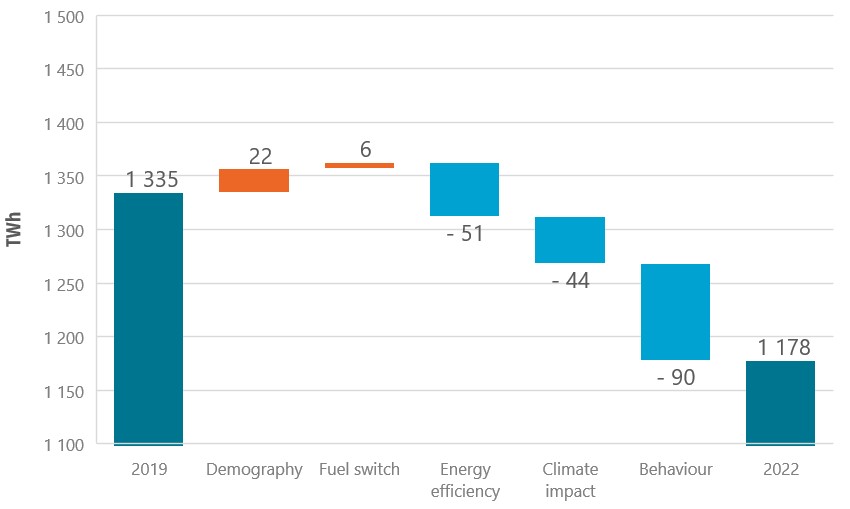Skyrocketing gas prices and threats to security of supplies have fuelled fears of power outages and economic collapse. Here’s why it hasn’t happened (yet).
In 2021, the price of EU natural gas increased significantly in the post-pandemic context with a global economic recovery. In 2022, the Ukrainian crisis led to the gradual loss of Russian gas imports, jeopardising the EU's security of supply and putting further pressure on the EU natural gas price. With prices soaring to a twenty-fold increase in August 2022 compared to pre-covid prices, EU gas end-users have seen their energy bills soar. This publication examines the impact of this increase on end-use natural gas consumption in the EU, focusing on buildings and industry.
Buildings: consumers’ behaviour played a huge role in the 2022 natural gas consumption reduction
In 2019, EU buildings accounted for 35% of total natural gas consumption and 54% of final2 gas consumption: this is therefore a key sector for limiting EU gas consumption in the current context of supply tensions. Gas end use in EU buildings is distributed between space heating (75%), water heating (20%) and cooking (5%). In the short term, end-users of gas in buildings have been faced with soaring energy bills, as well as calls from member States’ governments to reduce consumption. Despite state aid to limit gas energy bills, rising gas prices have destroyed part of the demand in the residential and tertiary sectors, with dramatic consequences for low-income households (fuel poverty). On the other hand, some households and companies have intentionally reduced natural gas consumption, thus participating in the global effort to overcome supply issues.
We estimate that there was 12% drop in natural gas consumption in EU buildings between 2019 and 2022.
We have developed a methodology to quantify this behaviour effect for 2022 with a breakdown of the main drivers of the 12% reduction in buildings consumption between 2019 (most recent pre-covid year) and 2022.
Natural gas consumption in EU buildings: decomposition 2019 vs. 2022

Source: Enerdata calculation from Odyssee database (demography, fuel shares, efficiency trends), Bruegel figures (2022 demand trend), Eurostat (historical degree-days and consumption)
 Energy and Climate Databases
Energy and Climate Databases Market Analysis
Market Analysis